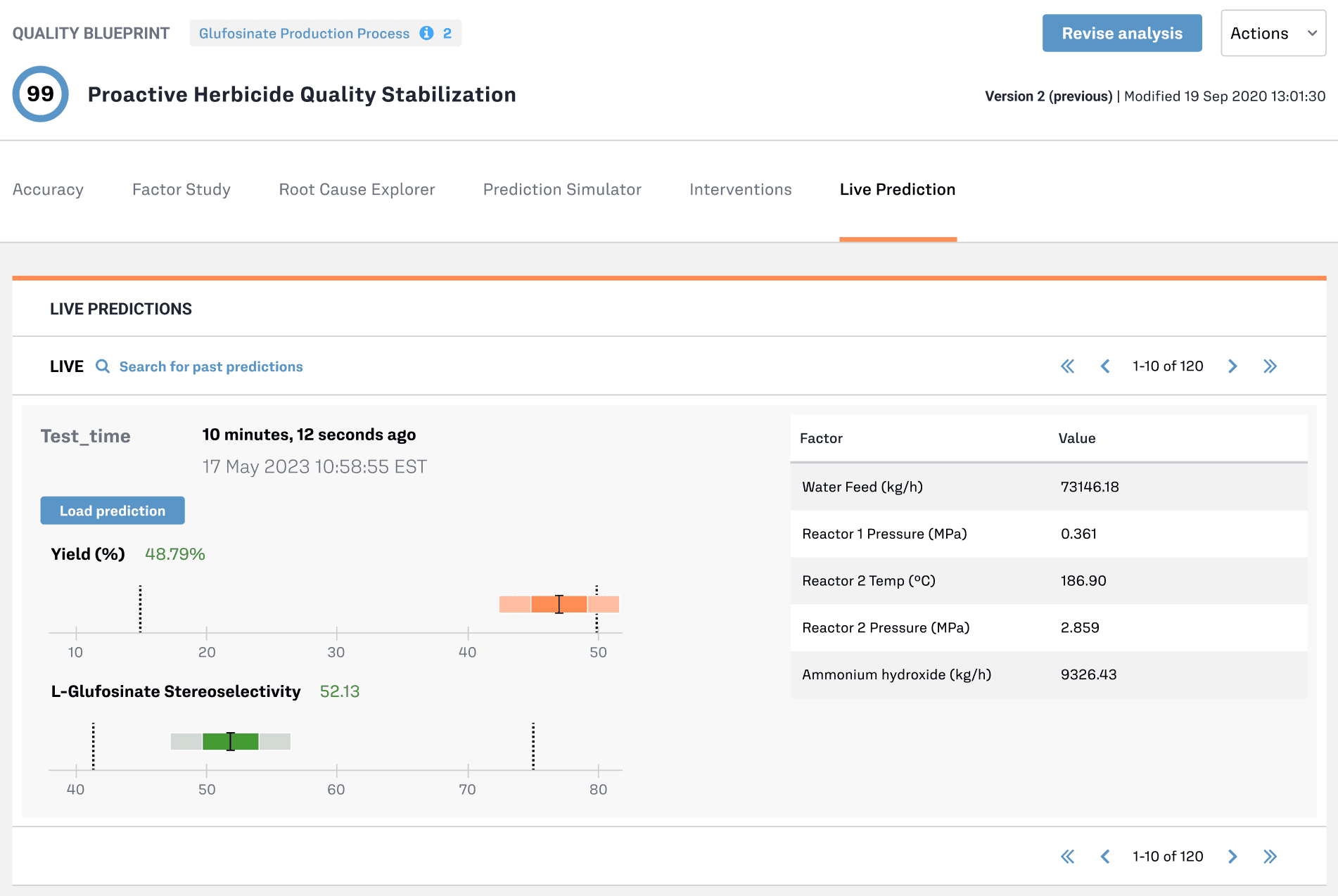Use Case Description
Background
The large-scale chemical production of broad-spectrum herbicides, such as glufosinate, involves a two-step reaction process comprising amination and hydrolysis, followed by distillation and crystallization.
The yield and selectivity of glufosinate produced can depend on various factors. These include the molar ratios of raw materials entering the amination reactor, the composition of intermediates fed into the hydrolysis reactor, and the operating conditions such as temperature and flow rates of each process unit. Successfully navigating these factors is essential to ensure high production quality and throughput in this complex chemical process.
Problem
The final glufosinate salt produced is regularly tested in the lab to ensure it meets industry standards. This involves operators manually collecting samples from the last stage of production and sending them to the lab for analysis. The frequency of sampling can vary, occurring every few hours or even daily, and the timing may extend based on the specific laboratory analysis conducted. This infrequent sampling of final product can result in considerable operational delays (e.g., during startup or unsteady-state conditions), during which operators do not know if glufosinate is still being produced within specification.
The complex interplay between reaction chemistry and process dynamics often presents a significant challenge for plant operators.
Adapt to upstream process condition variation and proactively prevent adverse effects on glufosinate quality.
The current solution is to course-correct production when the measured final product quality is out of spec. This can result in waste of raw material and decrease in production throughput due to longer inspection times during plant shutdowns, and high environmental and energy costs caused by the frequent starting and shutdown of the production process.
Fero Labs Solution
A virtual soft-sensor can be configured to predict and monitor the reaction selectivity, stereoselectivity, and yield of glufosinate in between the time periods at which samples of glufosinate are being sent and characterized in the lab.
This soft-sensor equips plant operators with real-time insights into the production process, aiding them in determining if the produced glufosinate meets industry specifications.
Furthermore, it is instrumental in detecting persistent quality issues, especially when lab results show that the product fails to meet the quality standards. This is critical in guiding plant operators to make informed decisions on making operational changes or initiating an unplanned shutdown, thus minimizing production losses.

Process & Business Outcomes
Real-time monitoring of production quality
Plant operators can gain real-time insight into production quality without having to wait for lab analysis results. They will also have a direct root-cause insight into how operational changes such as changes in raw material flow rates or temperatures can affect production quality.
In-process optimization based on product quality predictions
Soft sensors can enable plant operators to make adjustments to operational conditions based on product quality predictions. This can increase production throughput by up to 15%. In a market heavily limited by production capacity, this improvement could also translate into a top-line benefit of up to 15%.
Informed decision-making to mitigate unplanned shutdowns
Plant operators can be more confident when deciding to initiate an unplanned shutdown or make an operational change when process abnormalities occur. Similarly, they can be more confident of when they achieve steady-state conditions and production quality within spec during plant startups.
With full adoption of Fero Labs software, plant operators can expect to experience up to 36% decrease in unplanned production shutdowns and startups.
Reduced lab measurement frequency
A virtual soft sensor can reduce the frequency of lab measurements needed and provide estimates for them at consistent time intervals. This can relieve any laboratory driven process bottlenecks and reduce the total annual lab measurements by as much as 20%, while providing additional visibility into production.
Fero Labs Adoption Timeline
Plant teams can collaborate to set up and deploy Fero Labs. Below is a timeline highlighting typical steps. With Fero’s easy-to-use, no-code interface, this can be achieved in a matter of weeks, not months or years.
Data Requirements
Plant teams can collaborate to set up and deploy Fero. Below is a timeline highlighting typical steps. With Fero’s easy-to-use, no-code interface, this can be achieved in a matter of weeks, not months or years.
Activating This Use Case
Consider our Industrial Use Case Playbooks as inspiration and tactical ideas for your team to align on to maximize the efficiencies of your plant.
Each Playbook has a matching Use Case Blueprint which provides more detailed steps to activate each use case within the Fero Labs platform.
If you’re curious to see these in action please book a free feasibility study with our team!
Together, let us continue to push the boundaries of what's possible, driving towards a future where industrial manufacturing is not just efficient and sustainable but truly transformative in its impact on society and the world at large.
Thank you for joining us on this journey, and we look forward to continuing to partner with you in your pursuit of excellence.
Download the entire Proactive Herbicide Quality Stabilization Playbook to access additional tables and details about this industrial use case.







